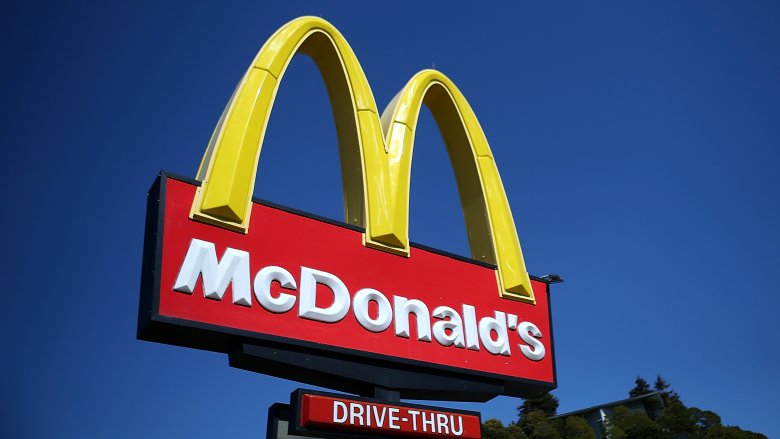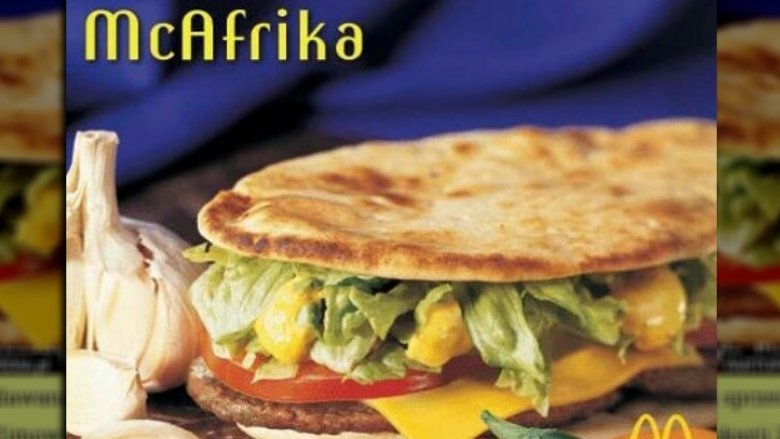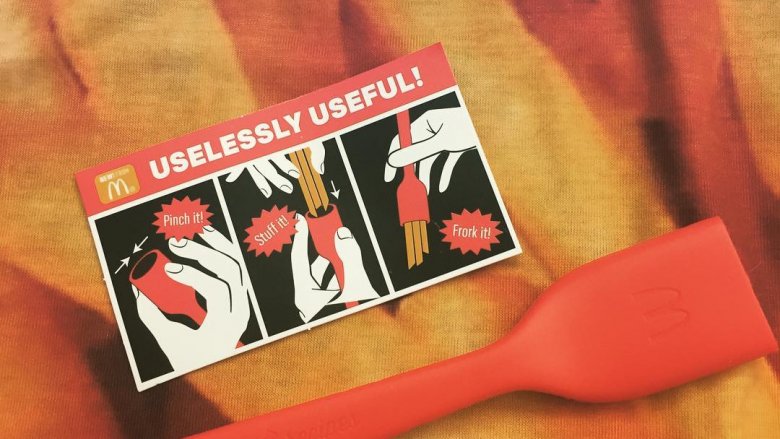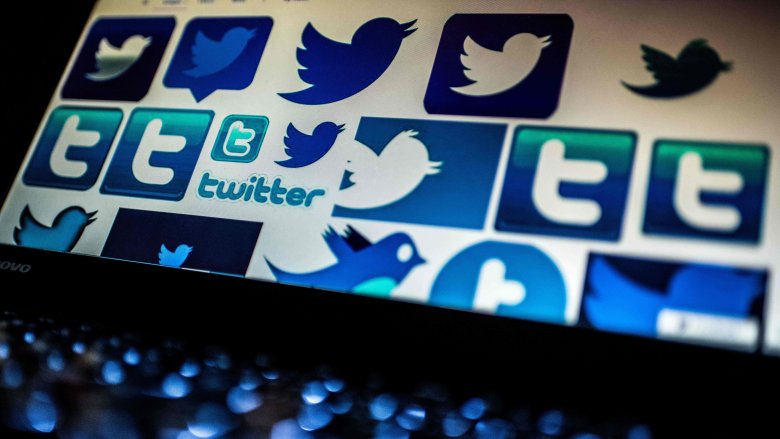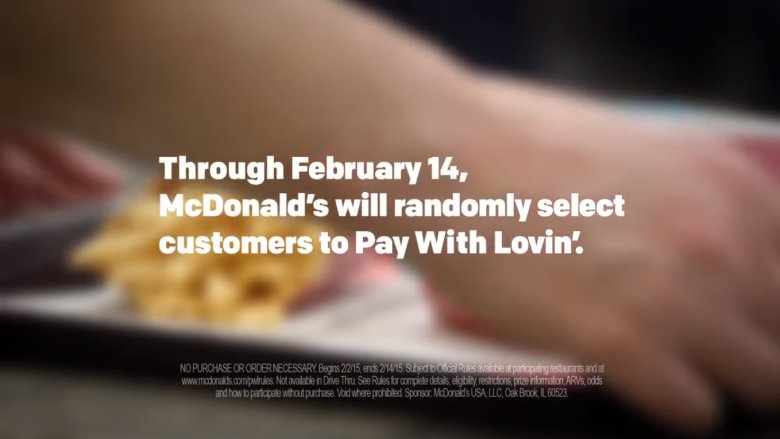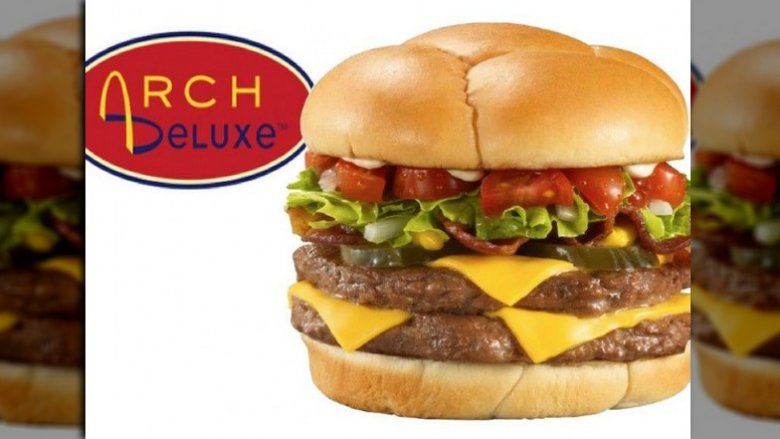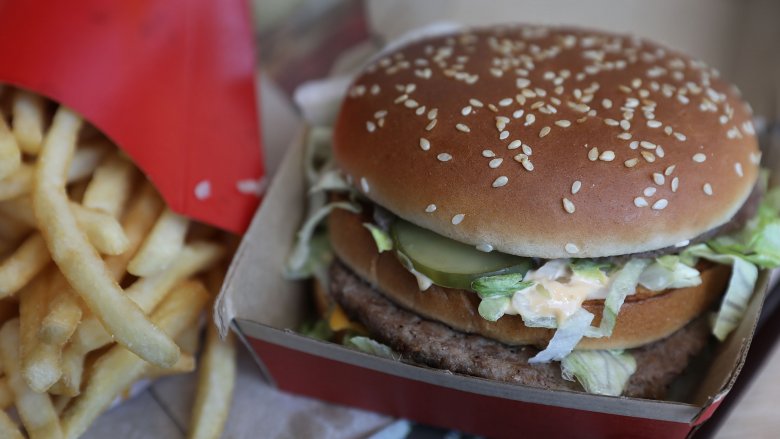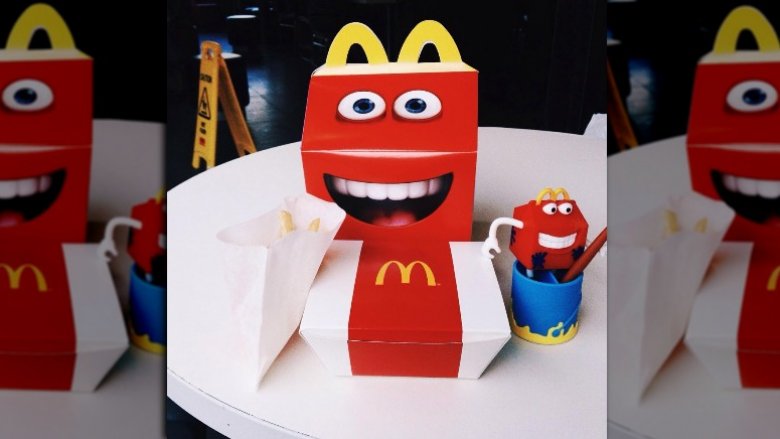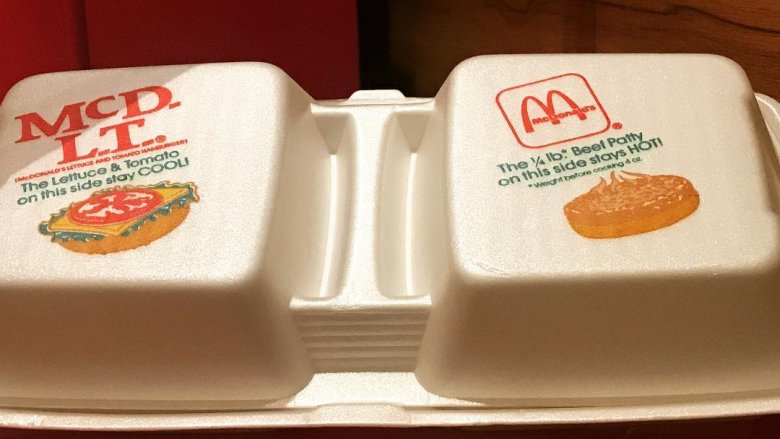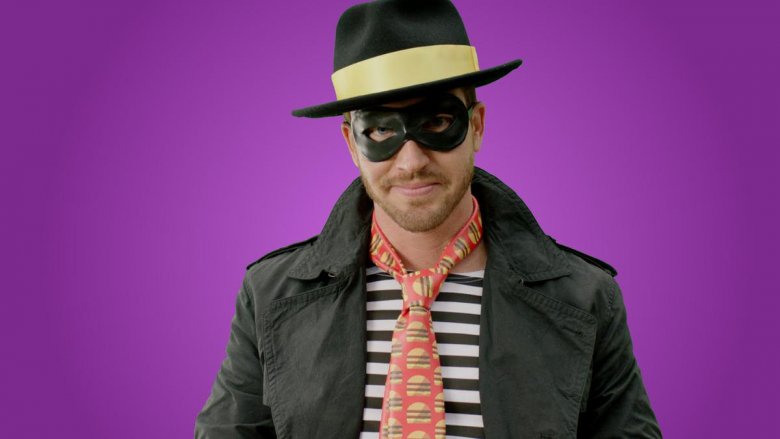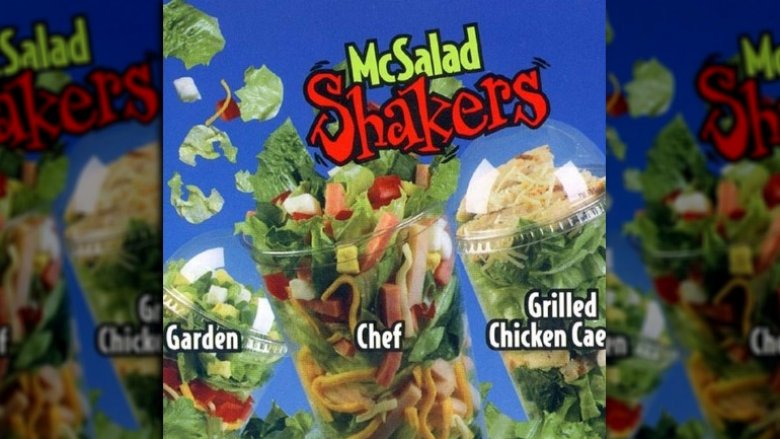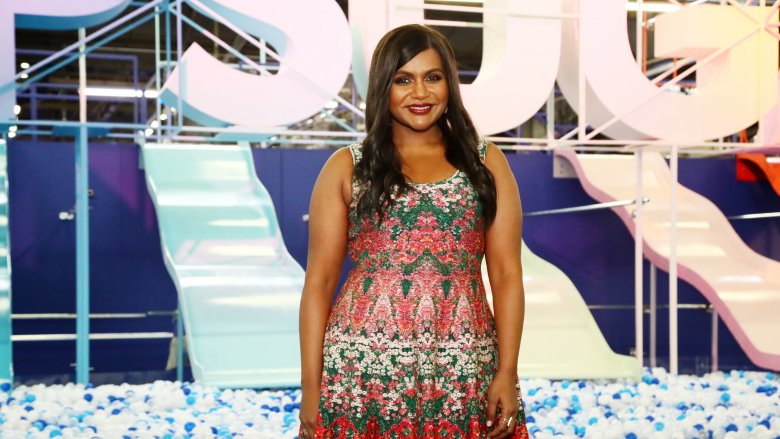McDonald's Most Questionable Campaigns
McDonald's have gotten a lot of things right over the years. They practically invented the notion of casual fast food. They somehow came up with the masterstroke of using cartoon characters to sell burgers. They even invented the Big Mac — which practically sells itself. Considering the company is worth billions of dollars today, it's not much of a surprise to find that they really are pretty good at selling things.
Nobody's perfect, though. For every smash success for McDonald's creative or marketing departments, there's a blunder waiting just around the corner. For every McFlurry, there's a McAfrika. For every Ronald McDonald, there's an even creepier mascot just waiting to give you the chills. And for every brilliant, inspired marketing campaign, there's another that just left you scratching your head. The history of McDonald's many campaigns is a rocky one, for sure. One thing it's not, however, is boring. Here are a few of their biggest mis-steps.
The poorly-timed McAfrica
McDonald's are pretty well known for tailoring various dishes and menu items to the regions in which they're selling them. McDonald's Singapore gets truffle fries, for example, while India gets a McCurry Pan and Spain gets gazpacho. It's nothing new. So nobody at McDonald's seemed to blink an eye when someone suggested introducing the McAfrika in 2002. It consisted of beef, cheese, tomatoes and salad inside pita bread, and was supposed to echo an authentic African recipe. So far, so good, right?
Well, here's where it all went wrong. First, McDonald's released this new menu item at the same time that a famine was ravaging the southern half of Africa. And then, they made it even worse when they decided to only release it in Norway, one of the world's richest nations. The McAfrika was so bombarded with criticism after its debut that McDonald's was forced to allow aid agencies to leave fundraising posters and collection boxes in its Norwegian branches just to save face. Of course, they only allowed them in the restaurants actually selling the McAfrika, and only for as long as it remained on the menu. Not exactly the kind of charity that tugs your heartstrings.
That time they tried to invent a new utensil
Okay, then. The Frork. Let's start at the beginning with this one. Back in mid-2017, McDonald's introduced a range of "Signature Crafted Recipes," marketed as fully customizable, toppings-heavy, upscale fancy burgers. They had things like guacamole, sweet BBQ bacon, and maple bacon Dijon mustard in them; real high-end stuff. That in itself sounds like a decent idea, but of course it wasn't enough for the Golden Arches. At the same time they rolled out the sandwiches, McDonald's introduced the Frork.
The Frork is basically a fork, except instead of prongs you've got fries. That's it. That's the whole thing. It was packaged as part of the same marketing campaign as the Signature Crafted Recipes (and were given away with an order of the burgers for one day only), as if there was some phenomenon occurring across the world in which people were failing to eat fancier burgers because their eating utensils weren't edible enough. In fairness to the company, they were pretty tongue-in-cheek with it — describing the Frork as "supremely superfluous," but that doesn't mean we should let them scurry out of having explain... any of it.
#McDStories wasn't as heartwarming as they hoped
#McDStories was such an innocent thing. It's like what you'd expect from a social media manager's first day: a simple hashtag on Twitter in which people were asked to share inspiring, heartwarming and otherwise lovely stories about Happy Meals. Did you spot the mistake they made, though? Yep — it was trusting the internet.
The hashtag was flooded with entirely less than flattering stories about McDonald's. Some users explained how they lost weight after stopping eating at the chain. Others told tales of horrific illnesses the restaurant's food had given them. A few just rambled about times they'd been high inside a McDonald's. It didn't go well. And the worst thing was that McDonald's had actually paid to promote the hashtag, too. After things went south, the company pulled the paid campaign — only two hours after it had began. Today, the #McDStories hashtag remains as little more than a useful tool for anyone wanting to be convinced not to go to McDonald's.
When they said you could "Pay With Lovin'"
In 2015, McDonald's celebrated Valentine's Day by inflicting upon mankind the worst thing to have ever happened at the Golden Arches: the Pay With Lovin' campaign. It's the kind of thing which works superbly for a commercial, but is nothing short of nightmarish in reality — certain customers are singled out at random as recipients of a "free" meal, the twist being that they have to perform some kind of romance-based task in exchange for their reward. This might include writing a poem, declaring they love someone or (shudder) conga dancing.
Here's the thing, though. You don't choose to Pay With Lovin'. There's no opt-in. It's something that's forced upon you, meaning at any moment during the campaign's existence, you — who only came here for a Filet-O-Fish, goddamnit — could be coerced by some sad cashier into starting a dance party with whichever poor souls also happen to be waiting in the queue at the time. We won't sugarcoat this. We can't. The Pay With Lovin' campaign was pure evil, and whoever came up with it might just spend eternity conga dancing in hell.
The grown-up burger
The Arch Deluxe was a vintage misstep for McDonald's. It landed back at the turn of the millennium and consisted of a Quarter Pounder topped with bacon, lettuce, tomato, cheese, onions, ketchup, mustard and mayo. All in all, doesn't seem like anything out of the ordinary. The company's method of marketing it to America, however, was nothing short of bizarre.
The Arch Deluxe — as well as its compatriots, the Fish Filet Deluxe, Grilled Chicken Deluxe and McLean Deluxe — were angled as "grown-up" sandwiches, aimed at capturing the palette of a fully-matured human adult. Commercials for the Deluxe range featured kids dumbfoundedly asking what all the fuss was about, while various posters and slogans highlighted the complex and sophisticated new taste that the sandwiches brought to the table. Two main problems with that, of course. First, when was the last time you went to McDonald's for a meal bursting with complex and sophisticated flavors? And second, exactly how confident would you feel leading a marketing campaign based on a burger that is supposed to be only for adults (at a kid-centric restaurant, no less)? Is the lettuce R-rated, or what? No thanks. Next.
Supersized problems
Supersizing was one of the most notorious ideas McDonald's ever came up with — and eventually proved so disastrous to the company and the wider food world that it actually ended up threatening the entire concept of fast food marketing. The concept of the supersized meal was introduced by the restaurant chain in 1993 to coincide with the release of Jurassic Park, and initially proved so popular it was kept around long after that film left theaters. It proved more than damaging to customers' well-being, however, with a supersized Big Mac meal (which came with a massive fries and drink) clocking in at an eye-watering 1,302 calories. The horrific effects of supersize portions became known to the wider public with the release of Morgan Spurlock's documentary film Super Size Me, in which he gained 25 lbs after living on supersize portions at McDonald's for a month.
In 2004, as criticism of the scheme began to grow, McDonald's finally put an end to its supersize portions and began to introduce more lower-calorie, lower-fat options onto the menu — but not before health panels and debates flared up across the world to discuss the negative impacts of fast food marketing on the public health.
Does this make you Happy?
Back in 2014, McDonald's attempted to add a new character to their nightmarish roster of cartoon mascots: Happy. In case you haven't figured it out, Happy is a Happy Meal. He's a very happy Happy Meal. In fact, he's probably just a little too happy. It's quite unnerving, isn't it? We're actually pretty sure Christian Bale makes that exact facial expression in American Psycho.
Happy wasn't all that well-received, of course. After his debut on social media, users dubbed him "spooky," "terrifying," and "McScary," some of them highlighting the similarity in appearance between him, the Microsoft Office paperclip, and Gary Busey. In an attempt to combat online criticism of their horrific new mascot, McDonald's responded by publishing a number of additional images to its Twitter account, this time featuring more Happys — all grinning that same grin, all wearing those wide, manic eyes. They probably hunt in packs, you know.
The packaging that was horrible for the planet
The McDLT was a sandwich created in the '80s which consisted of (you guessed it) a hamburger, lettuce and tomato. In a stroke of something we'd hesitate to call genius, McDonald's decided to separate the burger's hot and cold components, meaning in one side of the box you'd get half the bun, meat, and cheese, and in the other side you'd get the lettuce, tomato, and the other bun. One side would stay cool, the other would stay warm. Fab.
In order to achieve this, the company introduced the double Styrofoam clam shell container. It wasn't half snazzy, either: the McDLT was featured on the front along with fancy images of the pre-assembled burger and the restaurant's logo emblazoned on the "HOT" side for all to see. Unfortunately for McDonald's, the '80s also happened to be the decade in which everyone realized the horrific impact Styrofoam has on the environment. After a brief success, the double clam shell container and the McDLT were eliminated from the McDonald's menu.
When the Hamburglar went hipster
The Hamburglar has been a stalwart member of the McDonald's roster for almost half a century. His shtick is simple: he wants hamburgers, and he's not going to let any of your silly "laws" stop him from getting them (although, truth be told, he rarely actually got them).
The Hamburglar's classic, slightly off-putting persona is nothing, however, compared to what McDonald's released into the world back in 2015. This is the reinvented Hamburglar, and he's gone full hipster. Rather than the child Hamburglar we all knew from the 80s, we now have an adult man, who's presumably stealing the burgers out of children's Happy Meals. The creepist thing about HIpster Hamburglar is that he looks like someone way may have passed on the street. You may have seen him once before, outside your apartment building. Perhaps you noticed him poring through old LPs at a nearby record store (although he never seems to buy anything). Or maybe he even cornered you at a party to tell you the real reason his wife won custody of the kids. Either way, just how he ended up as the face of a national fast food marketing campaign is anyone's guess. Just smile politely, keep your head down and try not to let him engage you in conversation, yeah?
When they tried to shake things up
Marketing a salad at McDonald's is like trying to catch a fish on the moon — anyone would call you mad for trying. Major props to the corporation, then, for not only making an attempt back in 2000 to make salads hip and cool with their customer base, but by doing so in the most utterly ridiculous way possible.
The McSalad Shaker was basically a plastic cup with a domed lid, filled with salad and supposedly ideal for adding in your choice of dressing and shaking it up. McDonald's themselves called it a "revolutionary packaging concept" and introduced the McSalad Shaker with a bang and a shout by giving them out free to weary travelers at LaGuardia airport for two hours on a single day in April. Trying to get people to eat slightly healthier: admirable. Doing so by trying to sell them salad in a cup: questionable. At best.
That unbranded commercial
In 2017, McDonald's introduced a genuinely revolutionary concept into the world of marketing and advertising: a commercial which doesn't once mention the name of the company. The ad wasn't featured on the McDonald's social media pages, either. So what's the catch? What was the point of it?
Well, in the ad, actress Mindy Kaling suggests to viewers that they Google "that place where Coke tastes so good." The idea here being that search engine results naturally favor the McDonald's brand, meaning consumers are basically tricked into searching out their advertising. It's a new kind of marketing — less in-your-face, more in-your-head — which is likely to set a trend among advertisers as they increasingly attempt to sell their products surreptitiously. This is the next stage in guerrilla marketing, and it represents a genuinely harrowing development in the ways corporations gently persuade people into supporting them. You think subliminal messaging is a creepy concept? Just wait 'til you see what the future holds.
